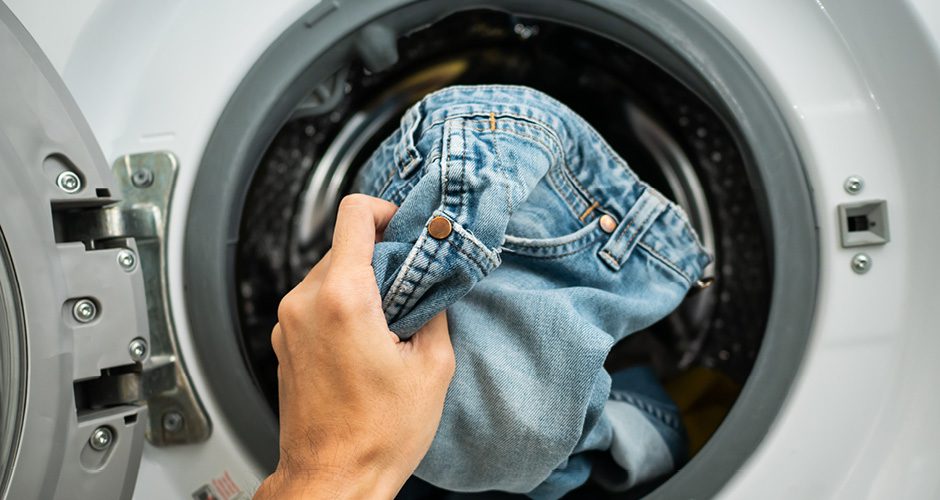Famous Laundry Legends
We wander through our daily lives with laundry and cleaning tips that have been passed down through generations. Some are tried and true and others are myths—tossed out there as “laundry facts” that are not scientifically tested and proven. Let’s look at a few big laundry myths:
1. Laundry Myth #1: More Soap, More Clean
You have a ripe pile of post-tournament laundry that could walk itself into the washroom. Or a pair of post-bonfire jeans and a sweatshirt smelling up the hamper.
Our natural instincts tell us to douse the load with extra detergent. A little-known fabric care fact is that going overboard with detergent does not make your laundry cleaner or enhance the smell. When there are too many suds, your laundry doesn’t get thoroughly rinsed. This can re-deposit the dirt back into your clothes leaving a residue that will live in your machine and garments and transfer back onto your skin. Excessive detergent ultimately defeats the whole purpose of your intentions to have clean clothes.
The plastic measuring cap that comes with your powdered or liquid detergent has lines with a recommended laundry detergent amount. If it’s tough to see those lines, take a moment to define them with a permanent marker. It will make your life and laundry quick and easy in the long haul.
2. Laundry Myth #2: If I Wear It, I Wash It
Most people don’t wash the sheets on their bed every time they sleep in it. With the exception of undergarments and post-workout clothes, take a moment to consider how often your clothes need to be washed. Do your favorite jeans and sweatshirt really need to hit the hamper after a day of just hanging out with friends?
Much of your wardrobe doesn’t need constant washing if not exposed to strong smells, dirt and stains. Consider the sniff test before you wash.
- Cotton and Linen: Natural, comfortable fibers. A normal wash frequency is every 3-4 wears.
- Denim: Durable fabric. Turn inside out and wash once a month to preserve your favorite jeans
- Wool and Cashmere: Natural, warm, and soft materials. Wash less than once a month.
- Polyester, Nylon, Acrylic and Synthetic: Consider steaming between washing every 3-4 wears. Steaming kills 96% of bacteria around the armpits and collar.
While these are good guidelines, how often you need to wash your clothes depends on your lifestyle and activity level. If you work in construction versus behind a desk, your laundry load and fabric care demands are much different. Being mindful about washing frequency will save you water, electricity, detergent and time.
3. Laundry Myth #3: The Hotter, the Cleaner
Hot water alone does not kill all the bacteria and viruses that live in our laundry. Whether it’s washing towels, bed sheets, baby clothes or the pajamas of a loved one who’s not feeling well, hot water and detergent alone doesn’t cut it. Chlorine bleach, pine oil or a phenolic disinfectant (as used in the healthcare) not only sanitizes your laundry, but it leaves the machine clean also.
Let’s examine the pros and cons of each options:
Liquid Chlorine Bleach – Clorox®
PROS:
- May be used in hot, warm or cold water
- Very inexpensive
- Fresh smelling options available
CONS:
- Used on white fabrics only
- Causes permanent damage to darks and colors
- Must use enough to be effective
Pine Oil – Pine-Sol®, Spic-n-Span Pine, Lysol Pine Action
PROS:
- Must be used with hot or warm water
- Use on white and colorfast fabrics
- ½ cup added to beginning of wash cycle
CONS:
- Can leave a pine fragrance on fabrics
- A bit more expensive
- Must contain 80% pine oil to be effective
Phenolic Disinfectants – Lysol®
PROS:
- May be used in cold, warm, and hot water
- Use on white and colorfast fabrics
- Gentle enough for baby clothes
CONS:
- More expensive than bleach
- Must use enough to be effective
Let Go to Get More
By finding the truth behind these three common laundry myths, you can maximize the time and effort you put into doing laundry resulting in clean, well-cared for clothes. Plus, your washer and dryer will stay cleaner, live longer and provide the intended fresh, crisp fabric care results you deserve.


